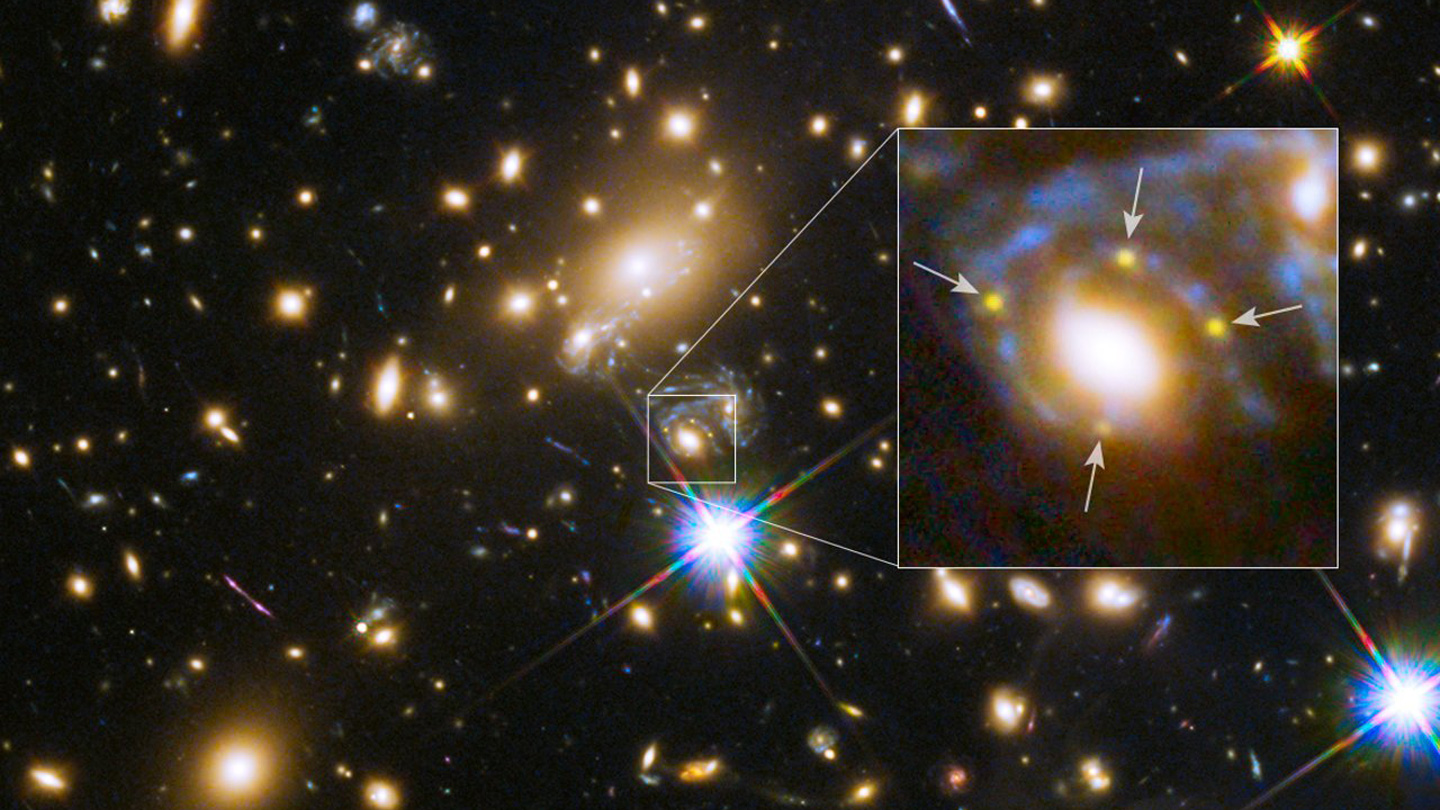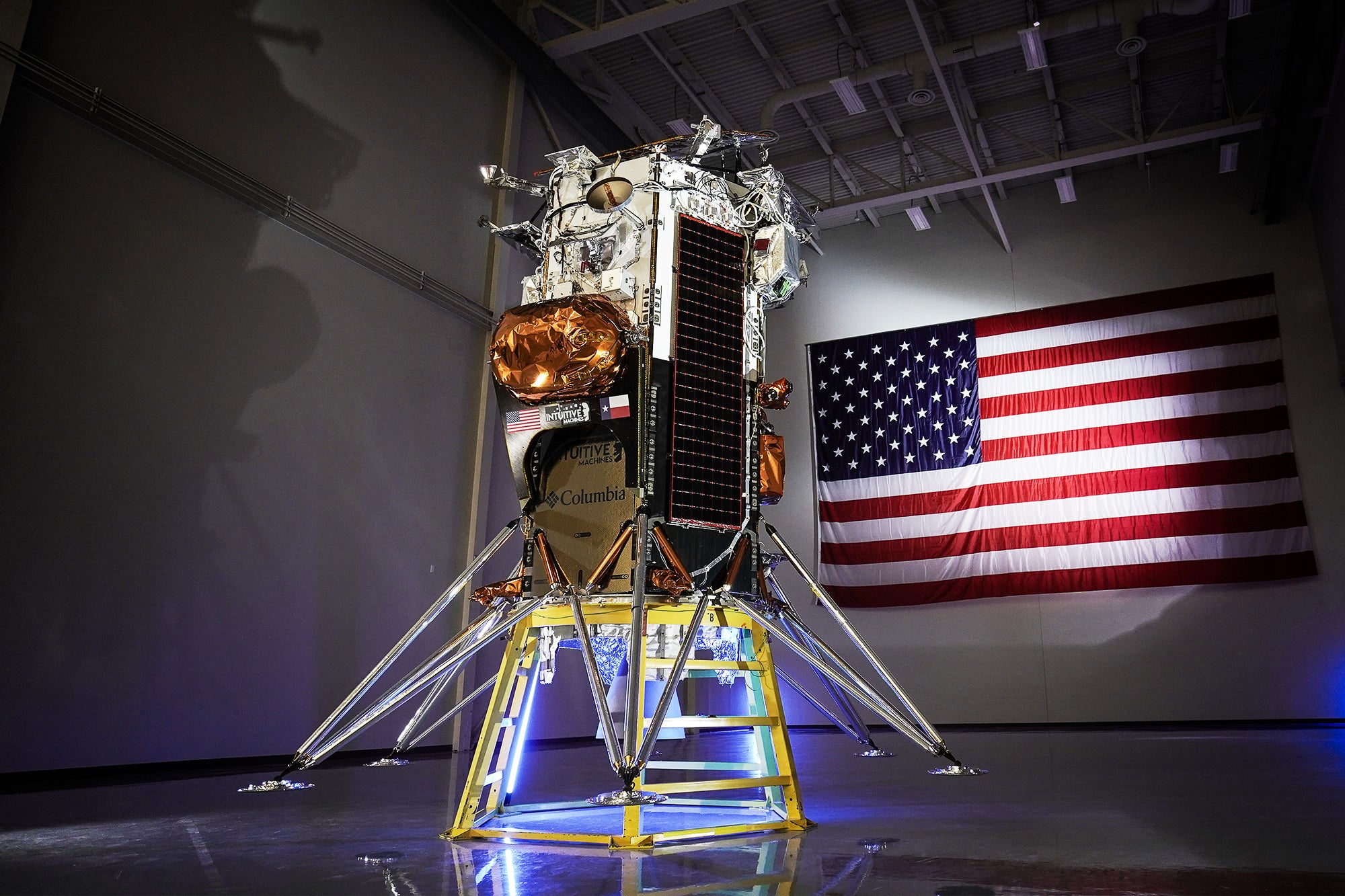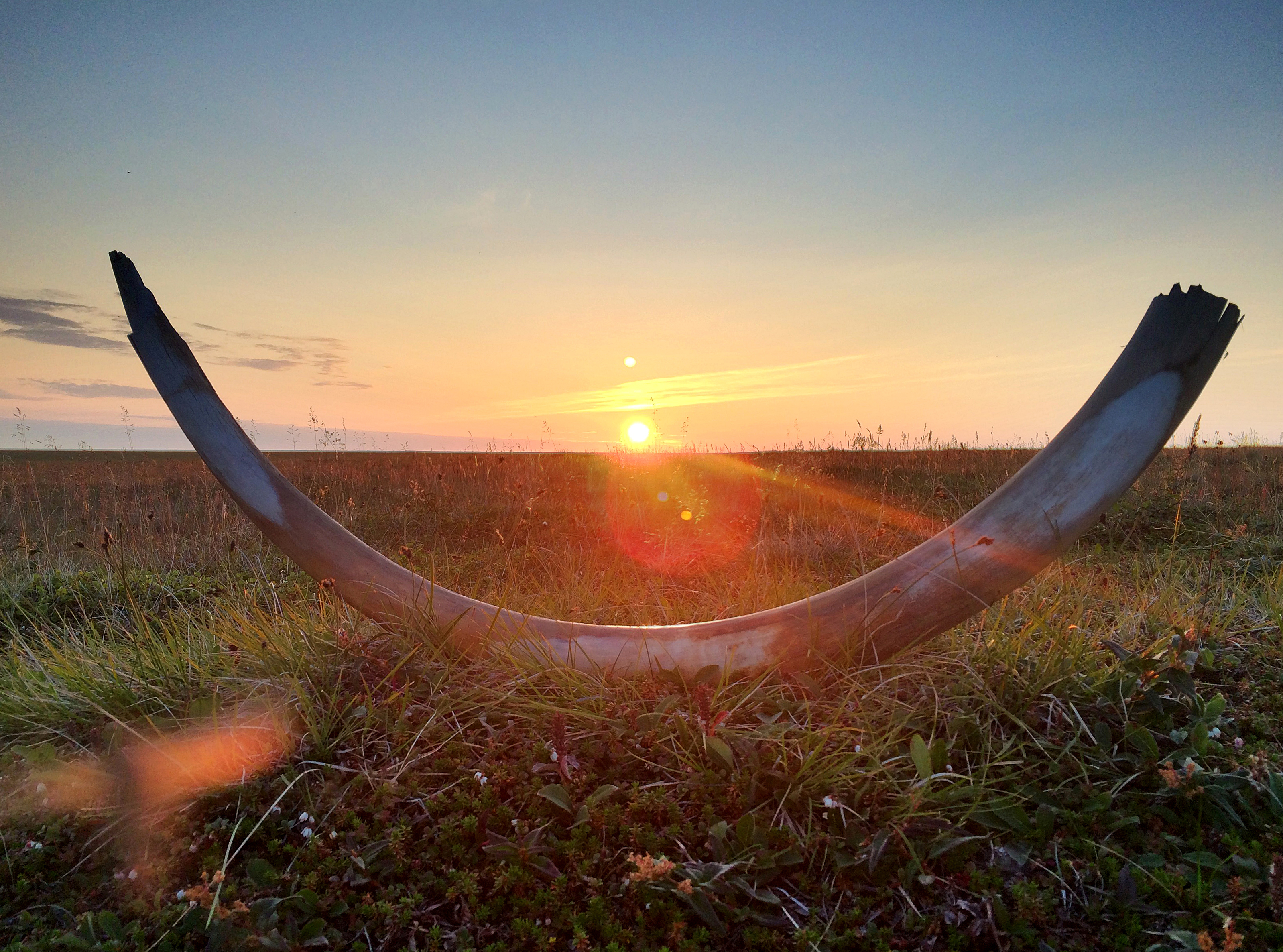A cosmic camera hog is helping astronomers figure out the rate of the universe’s expansion.
Images of the supernova Refsdal have popped up multiple times in the constellation Leo, thanks to light from the stellar explosion wending its way through the gravitational field of a cluster of galaxies. Analyzing delays between Refsdal’s appearances provides a new measurement of the Hubble constant, researchers report online May 11 in Science. That constant describes how quickly galaxies are flying away from each other as the universe expands. The new measurement is now contributing to debate over how fast the universe is expanding.
Supernovas are the massive explosions that come at the ends of some stars’ life cycles. They’re among the most violent and brilliant events in the universe. In 2014, astronomer Patrick Kelly of the University of Minnesota in Minneapolis discovered the Refsdal supernova in images from the Hubble Space Telescope.
Instead of a single burst in the sky, Kelly says, “We saw four images of it.” They formed a pattern known as an Einstein Cross. The cross resulted because the gravity of a cluster of galaxies between us and Refsdal distorts space and time to create a gravitational lens that deflects the light on its way to us.
The location and arrival times of the images we see depend on three things: the distribution of matter in the galaxy cluster that makes up the lens; the distances between Earth, the lens and the supernova; and the Hubble constant. The combined effect on the light from Refsdal is so strong that in 2014, Kelly predicted that one more image from the supernova would be delayed by another year. Sure enough, light from Refsdal showed up in the sky again in 2015 (SN: 1/5/16).
The new calculations from Kelly and colleagues greatly improve a 2018 measurement of the Hubble constant using Refsdal’s appearances, putting it at about 66.6 kilometers per second per megaparsec, based on gravitational lens models that most closely matched their observations. “The meticulous modeling of the [lens] system, along with the gravitational forces it generates, have allowed [the team] to decrease the margin of error in estimating the Hubble constant by more than a factor of two,” says astronomer Vivian Miranda of Stony Brook University in New York who was not involved in the new study.
Studies that estimate the Hubble constant in other ways don’t agree well with each other. One method that relies on ancient light left over from early cosmic times suggests that the universe is expanding at about 67 km/s/Mpc. That’s close to the value Kelly’s group found. But an expansion estimate that uses the distances to supernovas based on their brightness comes in around 74 km/s/Mpc (SN 7/30/19).
“The predicted value of the Hubble constant is highly sensitive to the dynamics of the universe, both in the distant past and the recent present,” Miranda says. “If our understanding of the universe is accurate, all the various methods of measuring the Hubble constant should align.”
Settling the discrepancy between different values of the Hubble constant is crucial to explaining things like dark energy, which appears to be accelerating the expansion of the universe (SN: 3/21/98).
It will take another supernova and lens to make a big leap in precision over the Refsdal study. A recurring image of a supernova in the constellation Cetus that’s expected to appear in 2037 might do the trick (SN: 9/13/21). In the meantime, Kelly says, further refinements in the model of the gravitational lens that caused the multiplied Refsdal images could improve estimates of the Hubble constant somewhat.
“This is the first example of this kind of measurement,” Kelly says. “It sets the stage for additional measurements and increased precision,” which could deepen astronomers’ insights into our ever-expanding universe.














